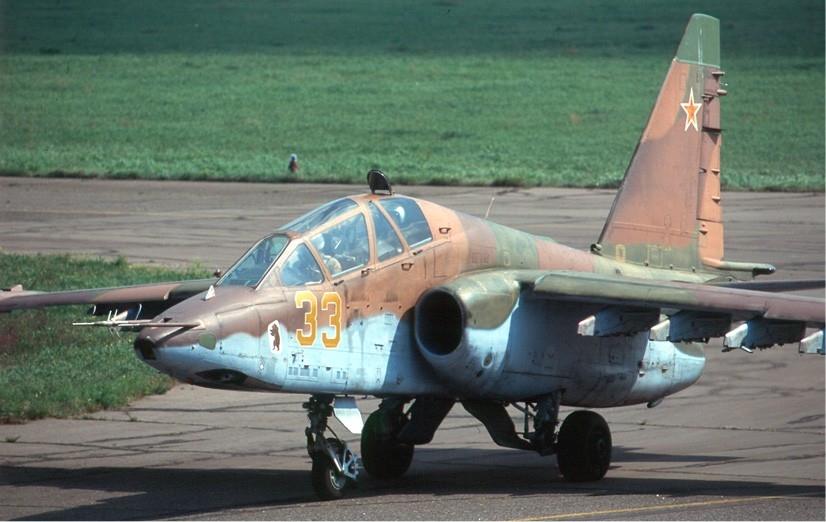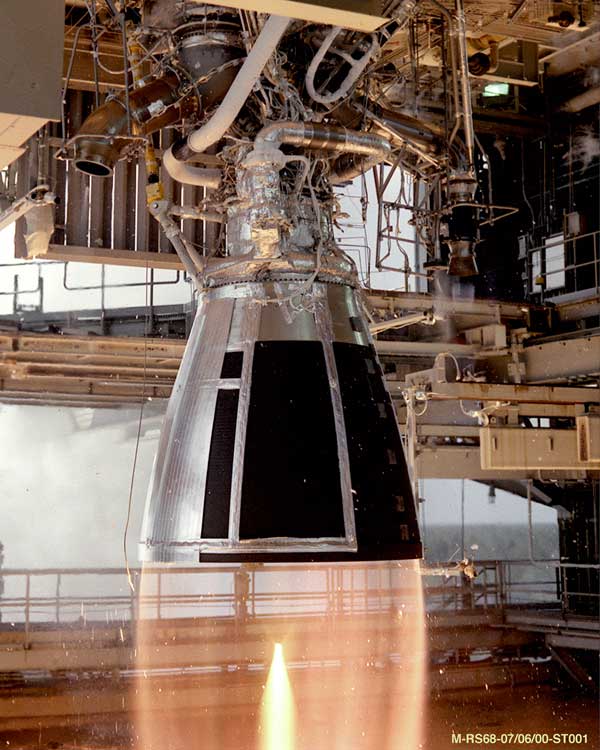|
Vikhr
The 9K121 ''Vikhr'' (, ; NATO reporting name: AT-16 Scallion) is a Soviet laser-beam-riding anti-tank missile. "9K121" is the GRAU designation for the missile system. The missile can be launched from warships, Ka-50 and Ka-52 helicopters, and Su-25T aircraft, and has a range of approximately 10km. It was first shown publicly at the 1992 Farnborough Airshow. Description The missile is designed to engage vital ground targets, including armoured targets fitted out with built-in and add-on explosive reactive armor, at a range of up to 8 km when fired from a helicopter and 10 km when fired from a fixed-wing aircraft in daytime and up to 5 km at night, as well as air targets in conditions of air defense assets activity. The Vikhr-1 missile is part of the Vikhr-M system, which also includes an automatic sight and a depressible launcher. Adopted in 1990, the missile was upgraded in 2021. The automatic sight is provided with TV and IR channels for target sighting, a las ... [...More Info...] [...Related Items...] OR: [Wikipedia] [Google] [Baidu] |
Ka-50
The Kamov Ka-50 "Black Shark" (, English: kitefin shark), NATO reporting name Hokum A, is a Soviet/Russian single-seat attack helicopter with the distinctive coaxial rotor system of the Kamov design bureau. It was designed in the 1980s and adopted for service in the Russian army in 1995. The Ka-50 is manufactured by the Progress company in Arsenyev. It is used as a heavily armed scout helicopter and has a rescue ejection system, rare for helicopters. During the late 1990s, Kamov and Israel Aerospace Industries developed a tandem-seat cockpit version, the Kamov Ka-50-2 "Erdogan" (, ), to compete in Turkey's attack helicopter competition. Kamov also designed another two-seat variant, the Kamov Ka-52 "Alligator" (, NATO reporting name: Hokum B). The Ka-52's unit cost is US$16 million as of 2023. Development The Ka-50 is the production version of the V-80Sh-1 prototype. Production of the attack helicopter was ordered by the Soviet Council of Ministers on 14 De ... [...More Info...] [...Related Items...] OR: [Wikipedia] [Google] [Baidu] |
Sukhoi Su-25
The Sukhoi Su-25 ''Grach'' ( ('' rook''); NATO reporting name: Frogfoot) is a subsonic, single-seat, twin-engine jet aircraft developed in the Soviet Union by Sukhoi. It was designed to provide close air support for Soviet Ground Forces. The first prototype made its maiden flight on 22 February 1975. After testing, the aircraft went into series production in 1978 in Tbilisi in the Georgian Soviet Socialist Republic. Early variants included the Su-25UB two-seat trainer, the Su-25BM for target-towing, and the Su-25K for export customers. Some aircraft were upgraded to the Su-25SM standard in 2012. The Su-25T and the Su-25TM (also known as the Su-39) were further developments, not produced in significant numbers. The Su-25, and the Su-34, were the only armoured, fixed-wing aircraft in production in 2007.Gordon and Dawes 2004. Su-25s are in service with Russia, other CIS members, and export customers. Production of the Su-25 ended in 2010 in Georgia. Attempts continue to b ... [...More Info...] [...Related Items...] OR: [Wikipedia] [Google] [Baidu] |
9M120 Ataka-V
The 9M120 ''Ataka'' (; ''Attack'') is an anti-tank guided missile (ATGM) originating from the Soviet Union. The NATO reporting name of the 9M120 missile is the AT-9 ''Spiral-2''. It is the next major generation in the 9K114 Shturm (AT-6 Spiral) family. The missile has radio command guidance and is also a beam riding SACLOS. This missile's primary variant was designed to defeat tanks with composite armour and explosive reactive armor. The 9M120 Ataka system is often confused with the 9K121 Vikhr system, despite being different weapons systems developed by different companies. The former was designed by the KBM machine-building design bureau and manufactured by the Degtyarev plant. According to the Stockholm International Peace Research Institute, Russia exported the Ataka ATGM to Iran, Kazakhstan, and Slovenia. Development The 9M120 missile was developed by the Kolomna engineering design bureau, located in Kolomna. This company already designed previous ATGMs, such as the 9M14 Maly ... [...More Info...] [...Related Items...] OR: [Wikipedia] [Google] [Baidu] |
Su-25
The Sukhoi Su-25 ''Grach'' ( ('' rook''); NATO reporting name: Frogfoot) is a subsonic, single-seat, twin-engine jet aircraft developed in the Soviet Union by Sukhoi. It was designed to provide close air support for Soviet Ground Forces. The first prototype made its maiden flight on 22 February 1975. After testing, the aircraft went into series production in 1978 in Tbilisi in the Georgian Soviet Socialist Republic. Early variants included the Su-25UB two-seat trainer, the Su-25BM for target-towing, and the Su-25K for export customers. Some aircraft were upgraded to the Su-25SM standard in 2012. The Su-25T and the Su-25TM (also known as the Su-39) were further developments, not produced in significant numbers. The Su-25, and the Su-34, were the only armoured, fixed-wing aircraft in production in 2007.Gordon and Dawes 2004. Su-25s are in service with Russia, other CIS members, and export customers. Production of the Su-25 ended in 2010 in Georgia. Attempts continue to be ma ... [...More Info...] [...Related Items...] OR: [Wikipedia] [Google] [Baidu] |
KBP Instrument Design Bureau
JSC ''Konstruktorskoe Buro Priborostroeniya'' (KBP) ( Joint-Stock Company - Instrument Design Bureau) is one of the main enterprises in the field of Defense industry of Russia, Russian defense industry, based in Tula. It is engaged in designing high-precision weapon systems for the Army, the VMF and the VKS, as well as anti-air defense systems, high-rate-of-fire cannons and small arms, in addition to civilian products. Its full name goes as "Joint-Stock Company Instrument Design Bureau named after Academic A. G. Shipunov". Its shareholders include High Precision Systems, part of the State Corporation Rostec. The designing of high-precision weaponry is the priority of the KBP. The enterprise designs air-to-ground, ground-to-air and ground-to-ground weaponry. In addition to these, KBP also develops modern autocannons and grenade launchers. It also manufactures automatic, hand-held and under-slung grenade launchers, sniper rifles, submachine guns, pistols and revolvers for the law ... [...More Info...] [...Related Items...] OR: [Wikipedia] [Google] [Baidu] |
AK-630
The AK-630 is a Soviet Union, Soviet and Russian fully automatic naval, rotary cannon, close-in weapon system. The "630" designation refers to the weapon's six gun barrels and their 30 mm caliber. The system is mounted in an enclosed automatic turret and directed by MR-123 fire-control radar and television detection and tracking. The weapon's primary purpose is defense against aircraft and helicopters. As one of the tried-and-true CIWS systems available, effectiveness against anti-ship missiles has been demonstrated over the years in exercises, making it the staple anti-air weapon of most Soviet naval vessels. The AK-630 can also be employed against ships and other small craft, coastal targets, and floating mines. Once operational, the system was rapidly adopted and installed in every new Soviet warship (from mine-hunters to aircraft carriers) with up to eight units on larger vessels; hundreds have been produced in total. History It is reported that Gun and Shell Factory makes ... [...More Info...] [...Related Items...] OR: [Wikipedia] [Google] [Baidu] |
Beam Riding
Beam-riding, also known as Line-Of-Sight Beam Riding (LOSBR), beam guidance or radar beam riding is a technique of directing a missile to its target by means of radar or a laser beam. The name refers to the way the missile flies down the guidance beam, which is aimed at the target. It is one of the simplest guidance systems and was widely used on early missile systems, however it had a number of disadvantages for long-range targeting and is now found typically only in short-range roles. Basic concept Beam riding is based on a signal that is pointed towards the target. The signal does not have to be powerful, as it is not necessary to use it for tracking as well. The main use of this kind of system is to destroy airplanes or tanks. First, an aiming station (possibly mounted on a vehicle) in the launching area directs a narrow radar or laser beam at the enemy aircraft or tank. Then, the missile is launched and at some point after launch is “gathered” by the radar or laser beam ... [...More Info...] [...Related Items...] OR: [Wikipedia] [Google] [Baidu] |
Mil Mi-28
The Mil Mi-28 (NATO reporting name "Havoc") is a Soviet all-weather, day-night, military tandem, two-seat anti-armor attack helicopter. It is an attack helicopter with no intended secondary transport capability, and is better optimized than the Mil Mi-24 gunship for the role. It carries a single gun in an undernose barbette, plus external loads carried on pylons beneath stub wings. Development Origins In 1972, following the completion of the Mil Mi-24, development began on a unique attack helicopter with transport capability. The new design had a reduced transport capability (3 troops instead of 8) and omitted the cabin to provide better overall performance and higher top speed. Improved performance was important for its intended role fighting against tanks and enemy helicopters and covering helicopter landing operations. Initially, many different designs were considered, including an unconventional project with two main rotors, placed with engines on tips of wings (in perp ... [...More Info...] [...Related Items...] OR: [Wikipedia] [Google] [Baidu] |
Boresight (firearm)
Boresighting is a method of visually pre-aligning a firearm barrel's bore axis with the target, in order to more easily zero the gunsight (optical or iron sights). The process is usually performed on a rifle, and can be accomplished either with the naked eye, or with a specialized device called a boresighter. Optical boresighting Optical boresighting, also referred to as "eyeball boresighting", as the name suggests, involves using the naked eye and the bore axis of a firearm to dial in the sights of a firearm. Based on the type of firearm the procedure for optical bore sighting will vary. For AR style rifles the upper receiver can be dropped from the lower receiver and the bolt carrier group (BCG) can be removed exposing a clear line of sight through the barrel. With the upper receiver fixed in place you can then co-witness through the barrel and the sights on the top of the rifle, while doing this you can visually align the bore axis with the sights on a desired target. F ... [...More Info...] [...Related Items...] OR: [Wikipedia] [Google] [Baidu] |
Rocket Engine
A rocket engine is a reaction engine, producing thrust in accordance with Newton's third law by ejecting reaction mass rearward, usually a high-speed Jet (fluid), jet of high-temperature gas produced by the combustion of rocket propellants stored inside the rocket. However, non-combusting forms such as cold gas thrusters and nuclear thermal rockets also exist. Rocket vehicles carry their own oxidiser, unlike most combustion engines, so rocket engines can be used in a vacuum, and they can achieve great speed, beyond escape velocity. Vehicles commonly propelled by rocket engines include missiles, Rocket-assisted projectile, artillery shells, ballistic missiles and rockets of any size, from tiny Rocket (firework), fireworks to Rocket (weapon), man-sized weapons to huge Space vehicle, spaceships. Compared to other types of jet engine, rocket engines are the lightest and have the highest thrust, but are the least propellant-efficient (they have the lowest specific impulse). The ideal ... [...More Info...] [...Related Items...] OR: [Wikipedia] [Google] [Baidu] |





